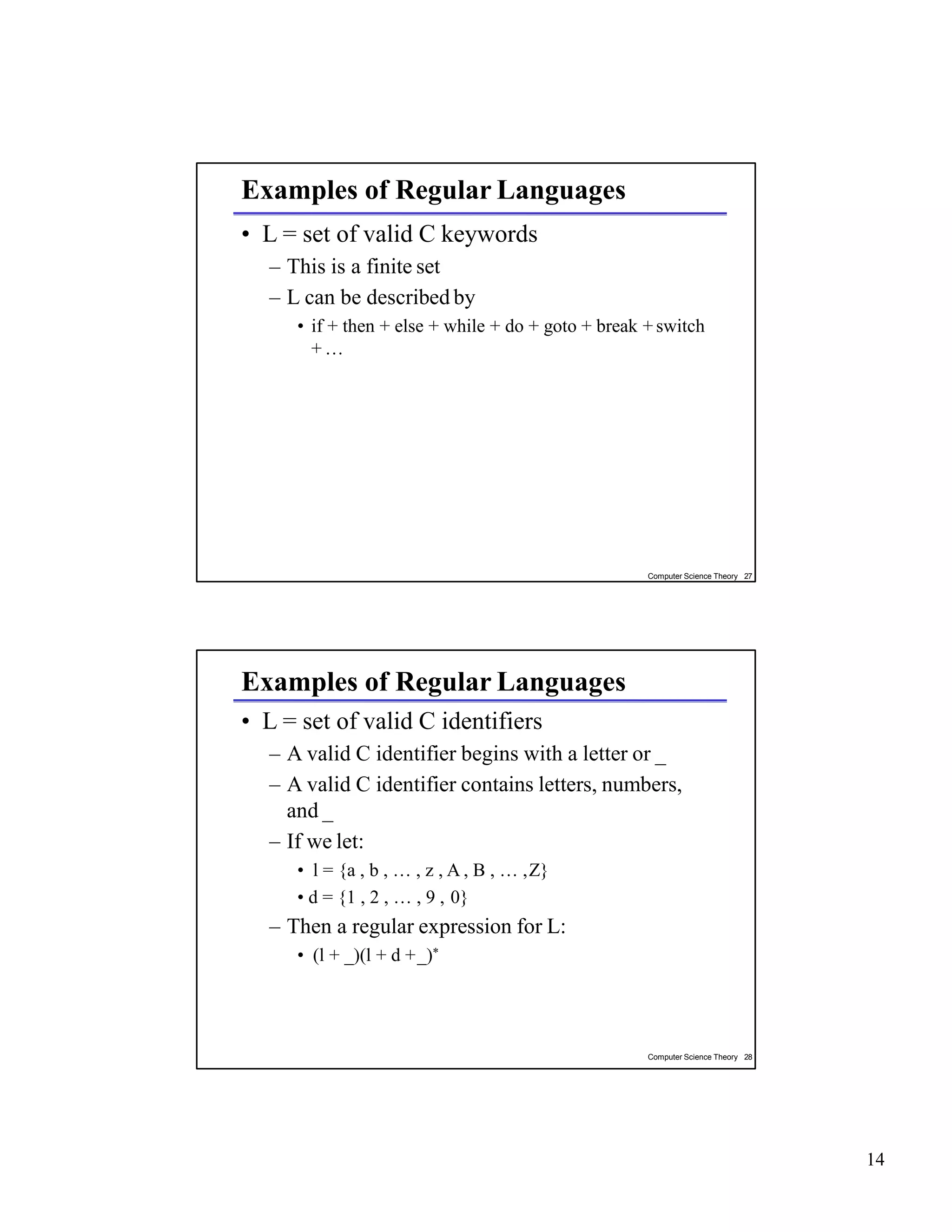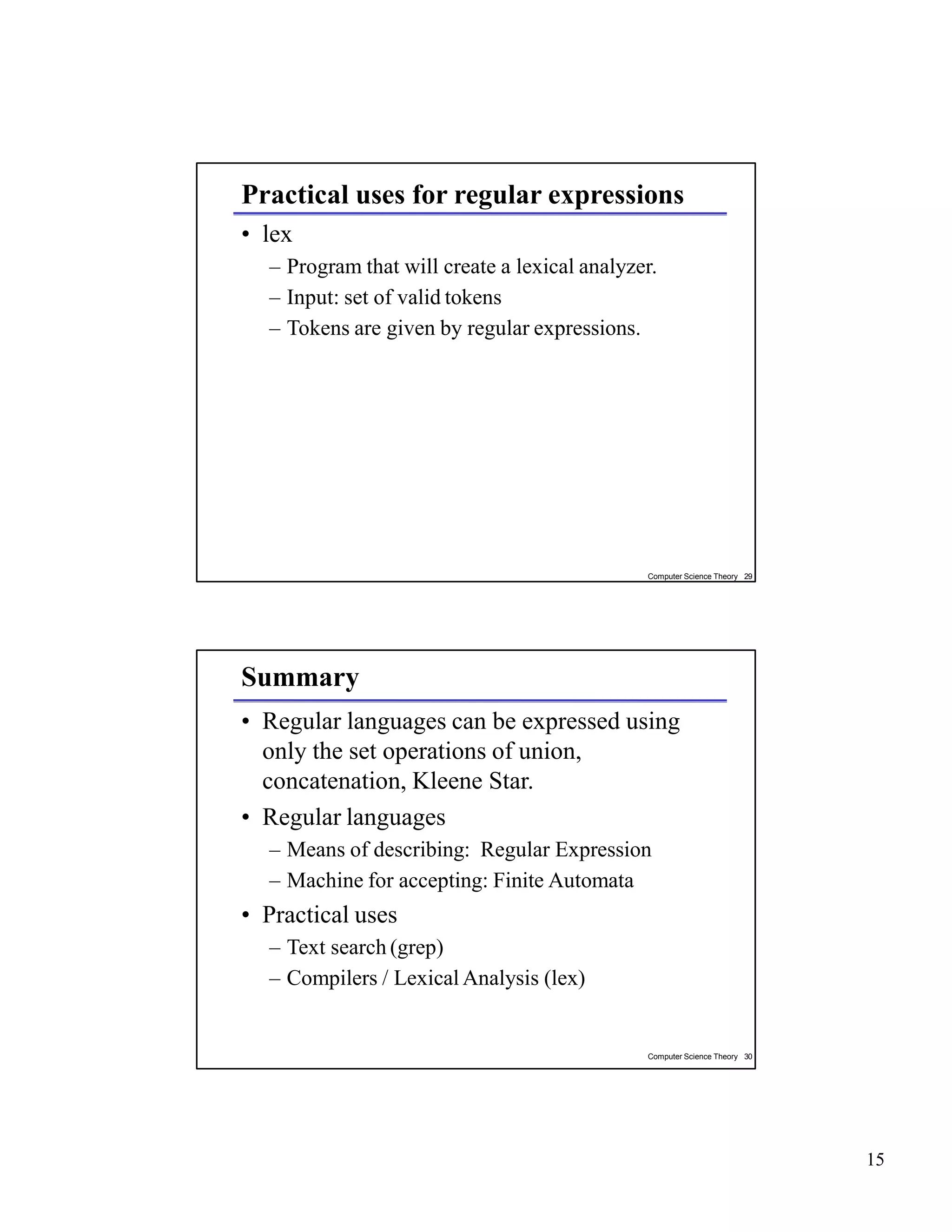Regular languages can be described using regular expressions, which use operations like union, concatenation, and Kleene star. Regular expressions allow specifying languages that can be recognized by finite automata. Practical uses of regular expressions include text search tools like grep and generating lexical analyzers for compilers.
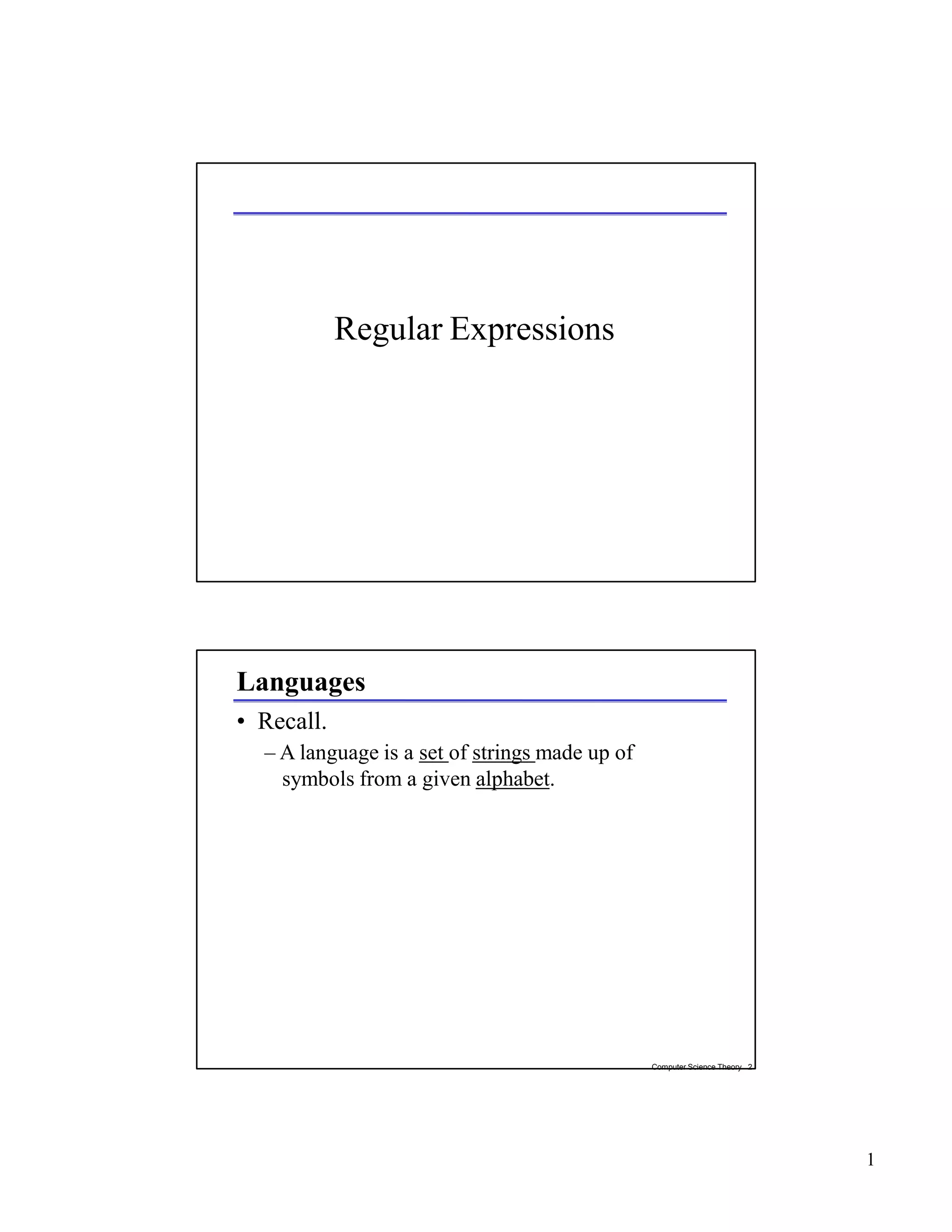
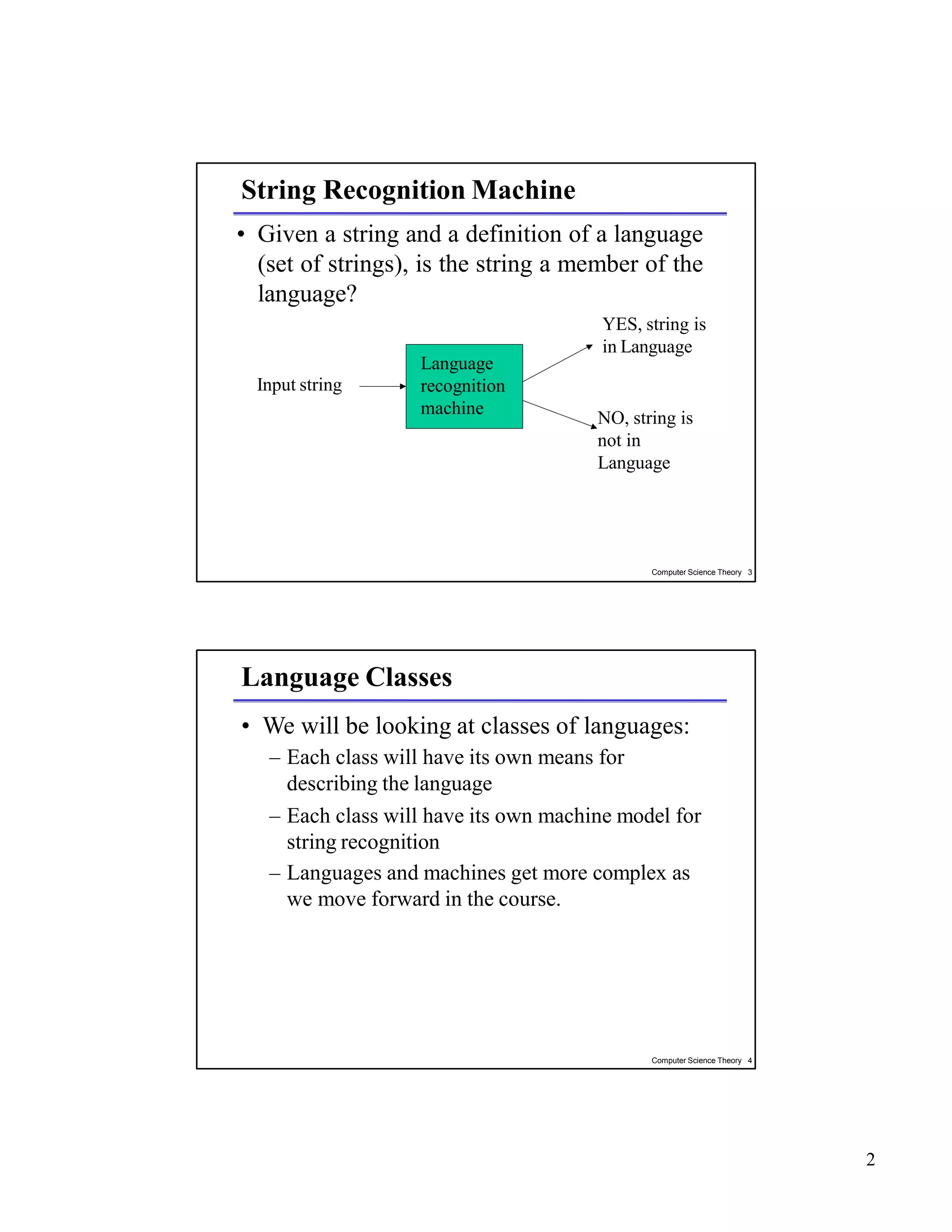

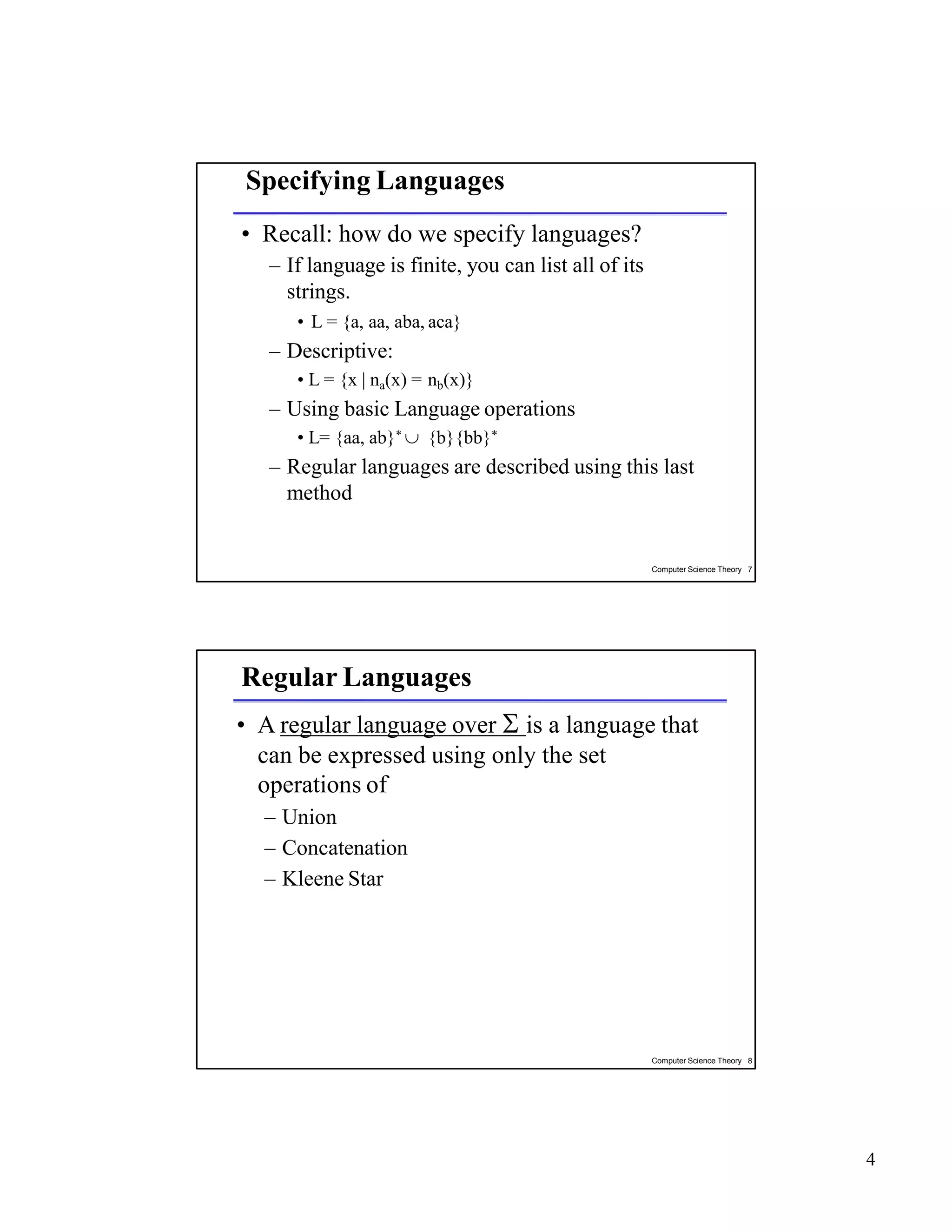
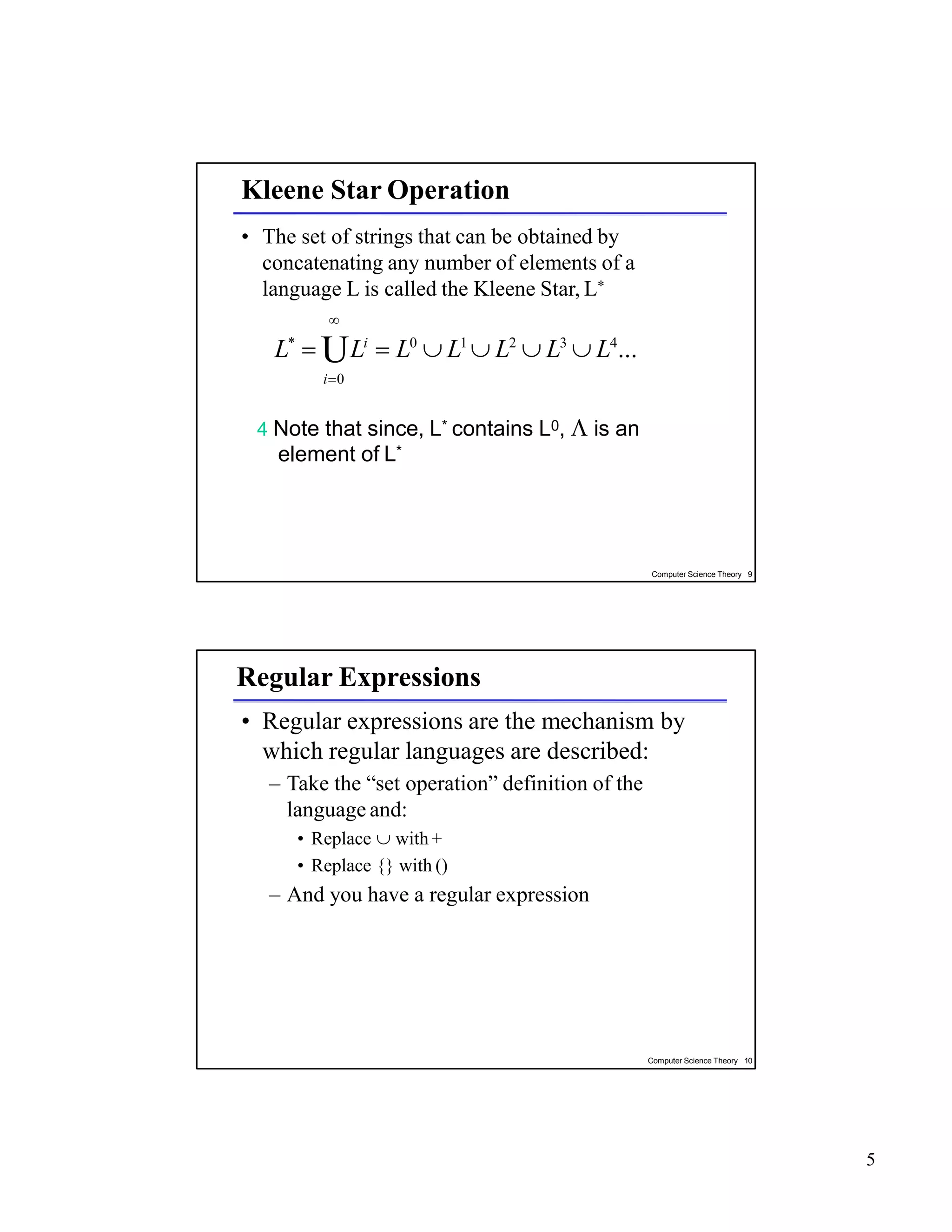
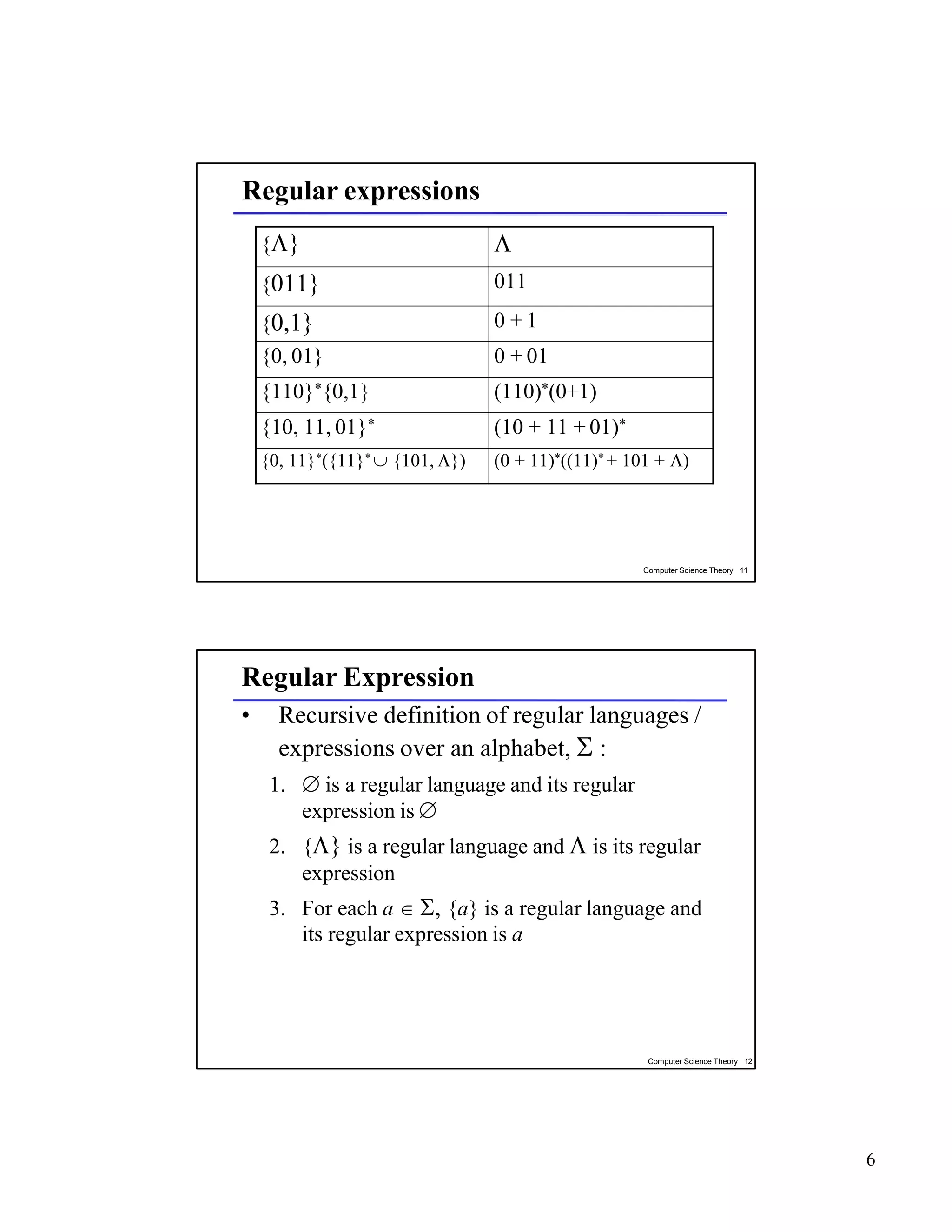




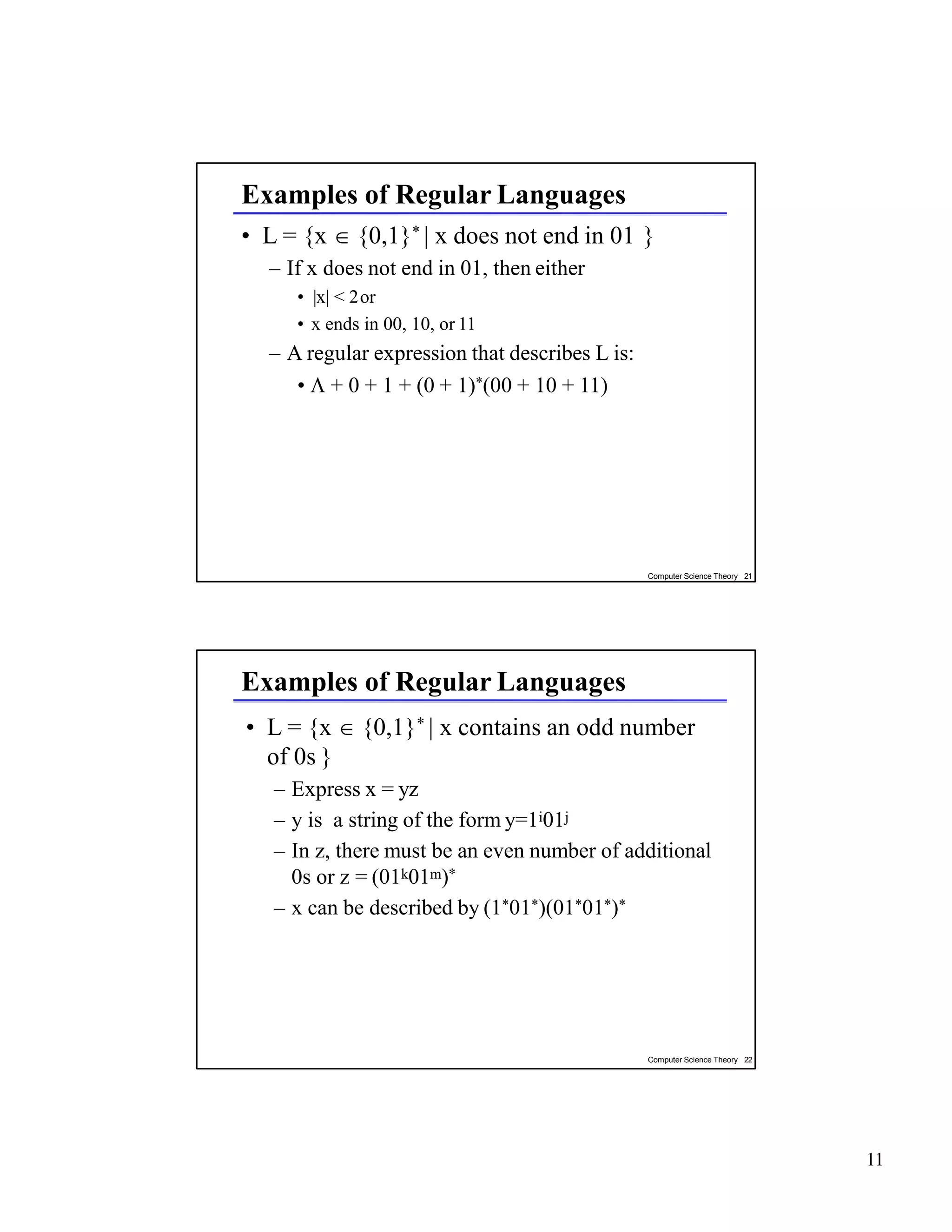
![Practical uses for regular expressions
• grep
– Global (search for) Regular Expressions and
Print
– Finds patterns of characters in a text file.
– grep man foo.txt
– grep [ab]*c[de]? foo.txt
Computer Science Theory 23
Computer Science Theory 24
Practical uses for regular expressions
• How a compiler works
Stream
of tokens
Parse
Tree
Objec
t
code
lexe
r
parse
r
codege
n
Sourc
e file
12](https://image.slidesharecdn.com/regularexpressionsh1-160120112259/75/Regular-expressions-h1-12-2048.jpg)

